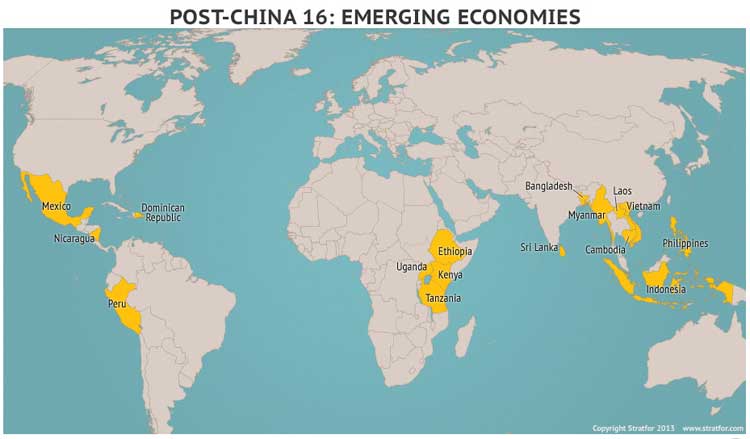We rarely do this, but this week SCDigest is using a graphic included in a regular On-Target new story we did this week as our featured chart/illustration.
And that's simply because it comes from a very provocative article by George Friedman of research firm Stratfor Global Intelligence, which says China is about at the end of its long low-cost manufacturing run, and is already starting to lose its place as the best locale for labor-intensive offshoring by Western and Japanese companies.
This sort of transition is in fact inevitable, Friedman says, just as it happened to Japan after the 1960s, when it lost its position as low-cost manufacturing haven.
While Japan was able to successfully move up the value chain from there, Freidman believes it will be more challenging for China to do so.
So what countries are poised to replace China for offshoring of labor-intensive goods? Stratfor identifies what it calls the "Post-China 16" - the 16 countries across four continents that are already starting to see sourcing volumes move their way.
They are shown below as our Supply Chain Grpahic of the Week.

Source: Stratfor Global Intelligence
Friedman says that in in general, Strafor is
already seeing a continual flow of companies leaving China, or choosing
not to invest in China, and going to these 16 countries - and that
this flow is now quickening, especially in the areas of apparel,
footwear and mobile phone assembly. A move of these industries to new
locations can be seen as an "early indicator" of more significant moves
across other sectors a few years later.
The inclusion of four African countries in the list - 25% of the total - seems especially interesting.
If true, this evolution will obviously have significant
supply chain implications, not only in terms of potentially moving
sourcing locations to these new countries, but also relative to a
potential change in mindset and investment from one that has recently
been very China-centric to something else.
Any Feedback on our Supply Chain Graphic of the Week? Let us know your thoughts at the Feedback button below. |